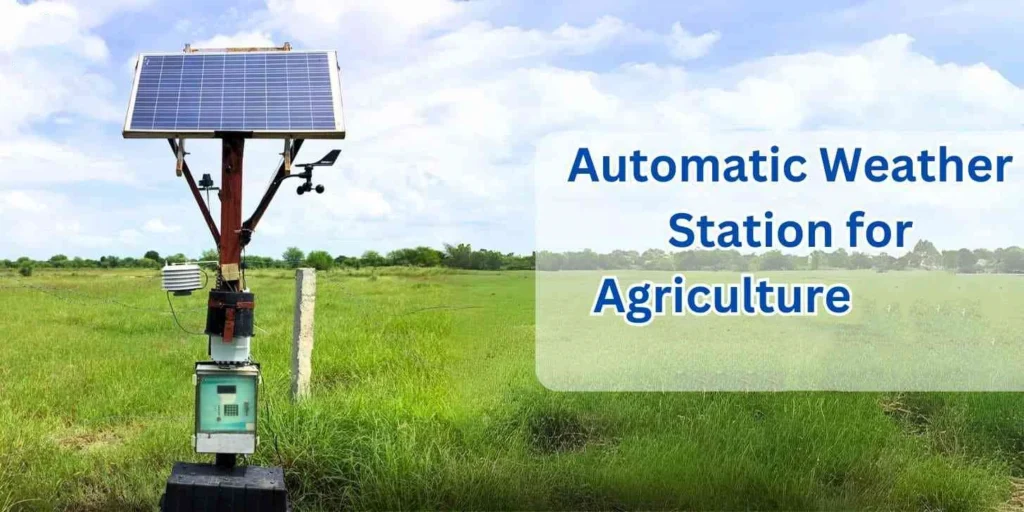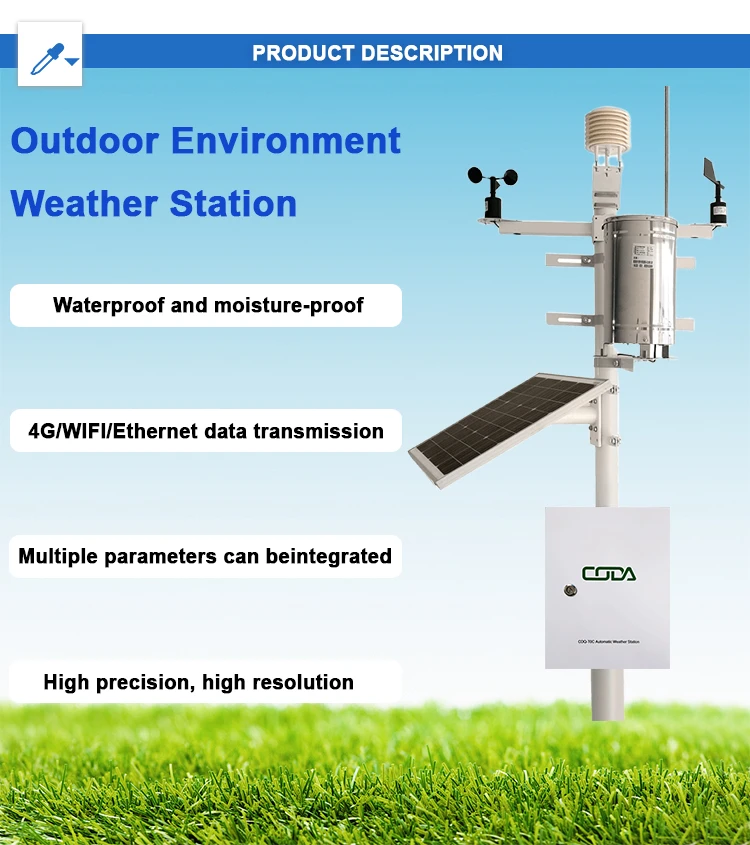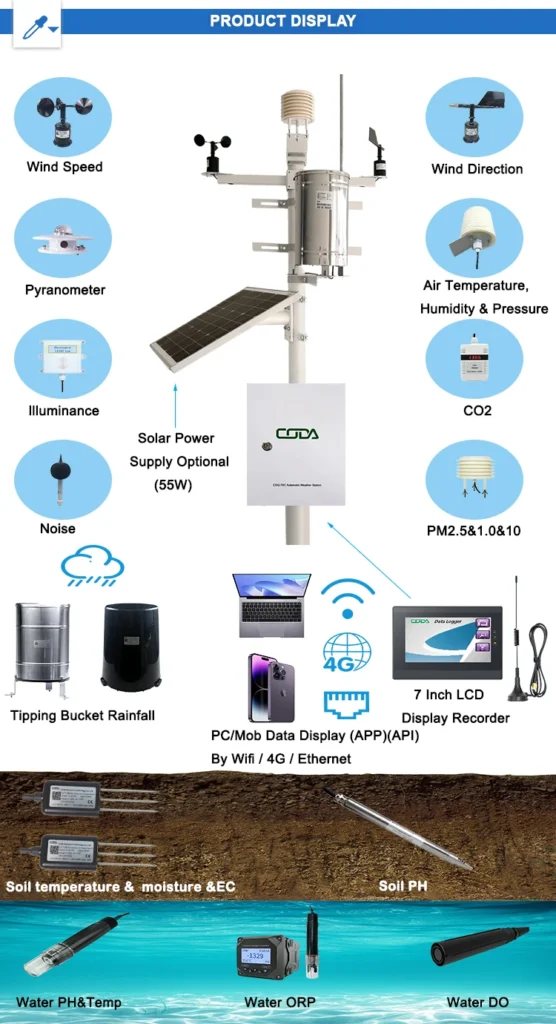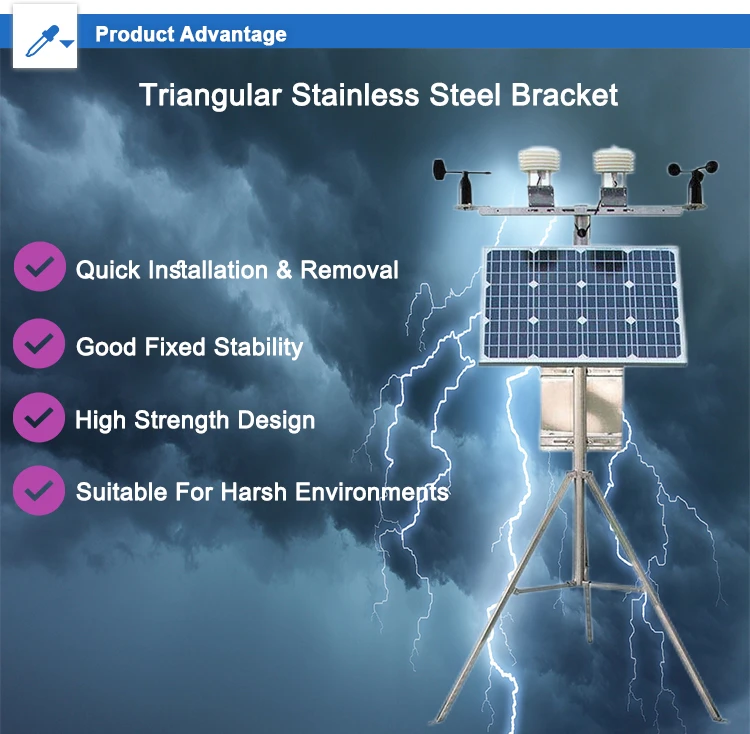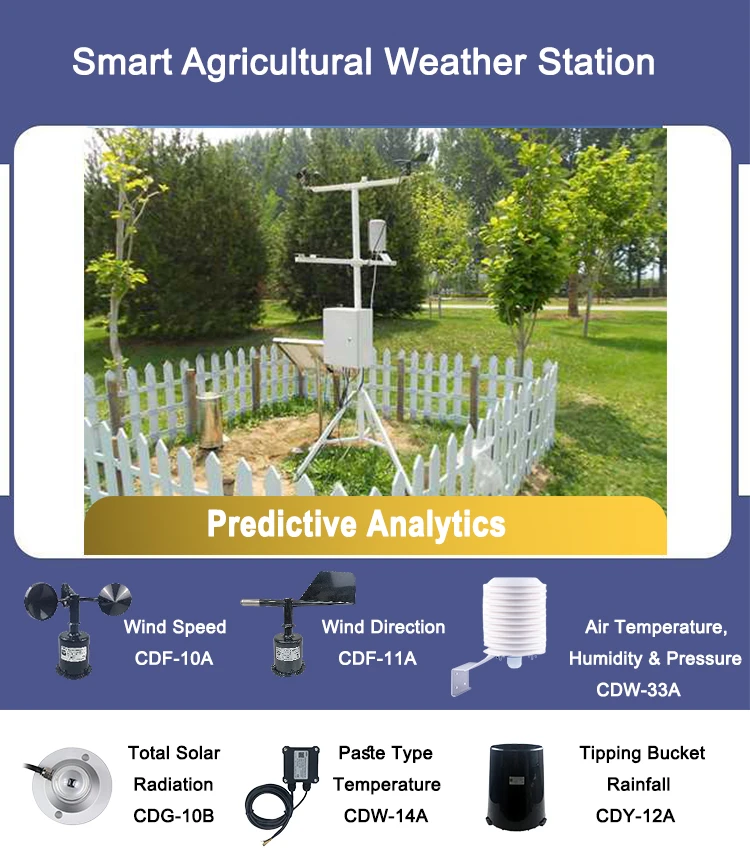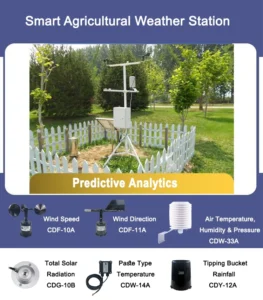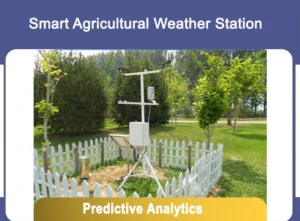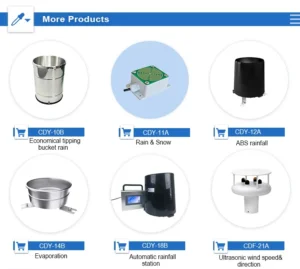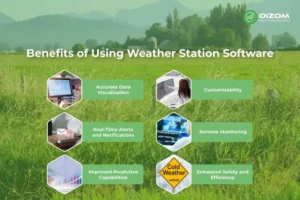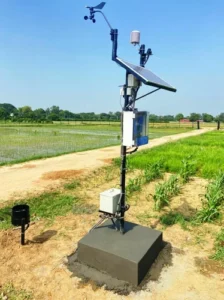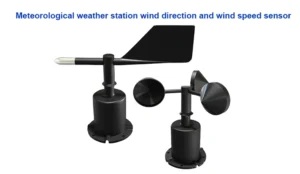What is the Automatic Weather Station ?
An Automatic Weather Station (AWS) is a key tool for weather and environmental scientists. It helps anyone who wants to understand weather trends. Engineers create these systems to provide real-time data on different weather elements. This article shares information about the parts, costs, benefits, and many uses of AWS.
Components of an Automatic Weather Station
Most AWS weather station include five key elements:
1. **Weather Sensors**
2. **Data logger Collectors**
3. **Power Supply Units**
4. **Communication Systems**
5. **Mounting Accessories**
1. Weather Sensors
A strong AWS uses many high-quality weather sensors to check environmental conditions. Common weather data includes wind speed, wind direction, temperature, humidity, solar radiation, atmospheric pressure, and rainfall. The following types of sensors are often used:
– **Wind Speed Sensor**:
Commonly available as cup anemometers or ultrasonic anemometers.
– **Wind Direction Sensor**:
Wind speed sensors are often used together for a full wind assessment.
– **Temperature Sensor**:
Typically placed in ventilated, louvered enclosures. This protects the readings from direct sunlight and other outside influences.
– **Humidity Sensor**:
You can usually find it next to the temperature sensor in the louvered box. The most common types are capacitance sensors and conductive sensors.
– **Atmospheric Pressure Sensor**:
Detects small changes in barometric pressure to predict if the weather will be stormy or sunny.
– **Solar Radiation Sensor**:
Measure solar energy levels with photosynthetic active radiation (PAR) sensors or total radiation sensors.
– **Rain Gauge**:
Measures rainfall using tipping bucket or weighing methods.
– **Lightning Detection Sensor**:
Tracks lightning events and records how strong and how often they happen.
– **Visibility Sensor**:
Evaluates how clear the atmosphere is for safe transportation in areas like aviation and maritime operations.
– **Gas Sensor**:
Monitors gases like carbon dioxide to check greenhouse gas levels and their effects on climate change.
We can use custom weather sensors for special needs. For example, we can check soil moisture in farming. We can measure snow depth with lasers for traffic control. We can track water levels in lakes and rivers. With new IoT technology, AWS systems are now more flexible and customizable than ever.
2. Data Collectors
The meteorology data collector is the “control center” of the AWS. It collects data from the weather sensor, processes it for immediate use, and stores it for later access. These devices also send user commands back to the weather sensor for smooth operation. If the network connection fails, the collector saves the data on the local device. It keeps the data until the connection is restored. Additionally, when weather conditions exceed set limits, the system can send alerts through SMS, email, or app notifications.
3. Power Supply Systems
The power system is essential for keeping AWS operations running smoothly. Common power sources include solar panels and regular utility power. Many stations use both to have backup during outages. This helps maintain reliable performance, even in unexpected situations.
4. Communication Systems
The communication system is the “nerve center” of the AWS. It helps different parts and users share data. It makes it easier to:
Sensor-to-platform communication**:
Data and instructions move easily between the sensors and monitoring platforms. The system sends processed data to users through wired or wireless methods. This helps users make quick decisions.
Here are the communication ranges:
– RS232 (Wired): 0–10 meters
– RS485 (Wired): 0–1,000 meters
– LORA (Wireless): 0–3 kilometers
– Wireless Microwave Radio: 0–500 meters
– GPRS (Wireless): Unlimited distance, but extra GPRS data costs apply
– WiFi Communication: Unlimited distance, if the right WiFi setup is available
5. Mounting Accessories
Mounting accessories are the backbone of an automatic weather station. They help weather sensors and other systems work well and give accurate measurements. The right height and alignment are key for reliable results. The main mounting accessories include:
– **Bracket Components:** Made from stainless steel, including brackets and screws for expansion.
– **Risers and Beams:** Heights can be customized based on real conditions.
– **Waterproof Box:** Made for outdoor use, protecting data collectors and power systems.
– **Lightning Protection:** Comes with the MSP-1 lightning rod and the MGP-1 grounding device.
Advantages of Automatic Weather Stations
1. Automated Monitoring**:
Automation is the main benefit of automatic weather stations (AWS). These systems collect, process, and send different types of weather data. After they are installed, AWS can track weather parameter changes all the time and provide real-time weather information.
2. High Accuracy**:
Using advanced IoT and high-quality sensors, AWS accurately measures important surface weather data and sends it reliably.
**3. Remote Monitoring**:
AWS lets you track weather data from many locations. This includes remote areas like polar regions and mountains. This helps with scientific climate research.
**4. Data Sharing**:
Network features let users share AWS data easily with weather departments, research labs, and environmental agencies. This improves how information is exchanged and used.
5. **Flexible Options**:
As technology changes, many types of automated weather stations are now available. These include small portable units and ultrasonic models. Users can choose sensors based on their needs. This helps them monitor different regions and requirements.
AWS vs. Traditional Weather Stations
1. **Monitoring Method**: Traditional weather stations need people to collect data. This takes a lot of time and can lead to mistakes. AWS automates this process, saving time and improving reliability.
2. **Data Processing**: In traditional systems, data is often written down or shared by phone, which is slow. AWS uses wireless transmission and built-in systems to process and share data quickly.
3. **Accuracy**: Traditional equipment usually covers small areas and gives less reliable readings due to human limits. AWS uses advanced algorithms to provide accurate surface weather observations over larger areas with great detail.
Applications of Automatic Weather Stations
Weather Forecasting:
AWS helps predict and track the weather in real-time. This gives early warnings for extreme events like heavy rain or hurricanes. It helps keep people and property safe.
Agricultural Production:
Farmers can look at soil and weather data to pick the best crops to grow. They can also adjust irrigation schedules and use fertilizers better to boost productivity.
Transportation safety:
In the realm of transportation, weather fluctuations heavily impact the navigation of aircraft and ships. Under foggy or stormy conditions, it becomes particularly easy to veer off the intended course. Data logger collected from weather stations and satellite radar systems significantly aids mariners and aviators in navigating safely through challenging weather scenarios.
Environmental protection:
Automatic weather stations are also vital for environmental monitoring. They can track some air pollutants. Wind speed and direction data help predict how pollutants spread. This improves our understanding of pollution dynamics.
Urban planning:
These automated weather stations are important for city planning. They check air quality, noise levels, and other environmental factors. This data can help planners make smart choices. They can decide where to create green belts, put up noise barriers, or solve traffic congestion problems.
